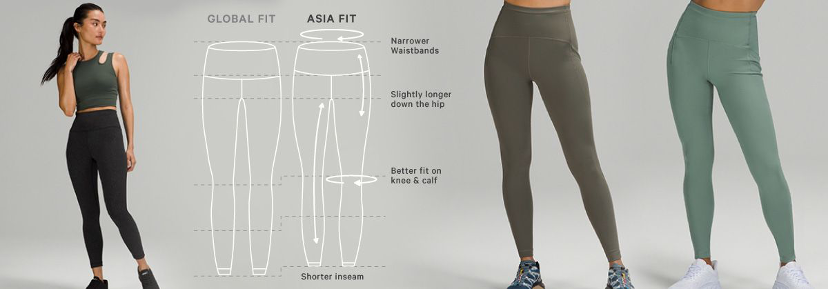The Stereotyping of "Asian" Fashion: Language
- Jeanette Jayaputri
- Jul 30, 2023
- 2 min read
Published 30 July 2023
By Jeanette Jayaputri
“Asian fit” is one of the phrases that probably us Asians often hear. This word is often uses to refer to the sizes for Asian’s. Generally, “Asian fit” represents sizes that are smaller than usual sizes (ReConvert, 2022). It runs smaller than US or EU clothing sizes (ReConvert, 2022), because Asian women especially have thinner bodies compared to their Western counterparts (Noh et al., 2018). Body image builds different perspective to the audience (Noh et al., 2018), however, size should be universal to embrace the cultural diversity for in fashion. Instead of using “Asian” in the tag, there are many words that could be used to not differentiate or stereotyping Asian sizing in the market.
This phrase may be a benefit for them who are petite, which become a special range section (Sullivan, 2021). This can be advantageous for them to easily find their size specifically for their measurement, instead of searching in standard sizes. It could become a better fit for them and eliminate the need any extra tailoring, especially in length (Sullivan, 2021).
According to Sullivan (2021), “Asian” stereotyping is a bit harsh because may refer an Asian who could not fit to the Western standards because of being underweight (Sullivan, 2021). On the other hand, it may cause the consumer to become insecure, because the typical ideal body type promoted to Asian is to have to reach a certain body standard (Sullivan, 2021). Consequently, it might deter the consumer through a negative impact because it builds the negative perspective of having that unreachable body (Sullivan, 2021).
So, does “Asian fit” is actually benefit anyone? In certain ways yes, but there might also be cons to the consumer. It helps to cater to the consumer to find their sizes more easily (Mansor, 2023), instead of following the standard sizes. However, it builds negative impacts in using this phrase as it differentiates an Asian body from general body standards, which shows that fashion is diverse in sizing. Furthermore, by how it to an Asian specific body type, but the fact is that Asians have a variety body measurement that can actually fit to a standard body measurement. Instead of using the term “Asian fit” businesses could consider using different words in representing sizes to also build a positive perspective towards Asian.
Reference:
Mansor, F. (2023). What is the story behind everyone’s obsession with Lululemon’s Align pants? [online] South China Morning Post. Available at: https://www.scmp.com/presented/lifestyle/topics/story-align/article/3215330/lululemon-bestselling-pants [Accessed 15 Jul. 2023].
Noh, J.-W., Kwon, Y.D., Yang, Y., Cheon, J. and Kim, J. (2018). Relationship between body image and weight status in east Asian countries: comparison between South Korea and Taiwan. BMC Public Health, 18(1). doi:https://doi.org/10.1186/s12889-018-5738-5. ReConvert (2022). How to Convert Asian Size to US Size: A eCommerce Merchant’s Guide | ReConvert. [online] www.reconvert.io. Available at: https://www.reconvert.io/blog/asian-size-to-us-size#:~:text=As%20a%20general%20rule%2C%20Asian [Accessed 15 Jul. 2023].
Sullivan, E. (2021). I was constantly told I didn’t have the perfect ballerina body. [online] SBS Voices. Available at: https://www.sbs.com.au/voices/article/i-was-constantly-told-i-didnt-have-the-perfect-ballerina-body/g7031h40q [Accessed 15 Jul. 2023].







コメント